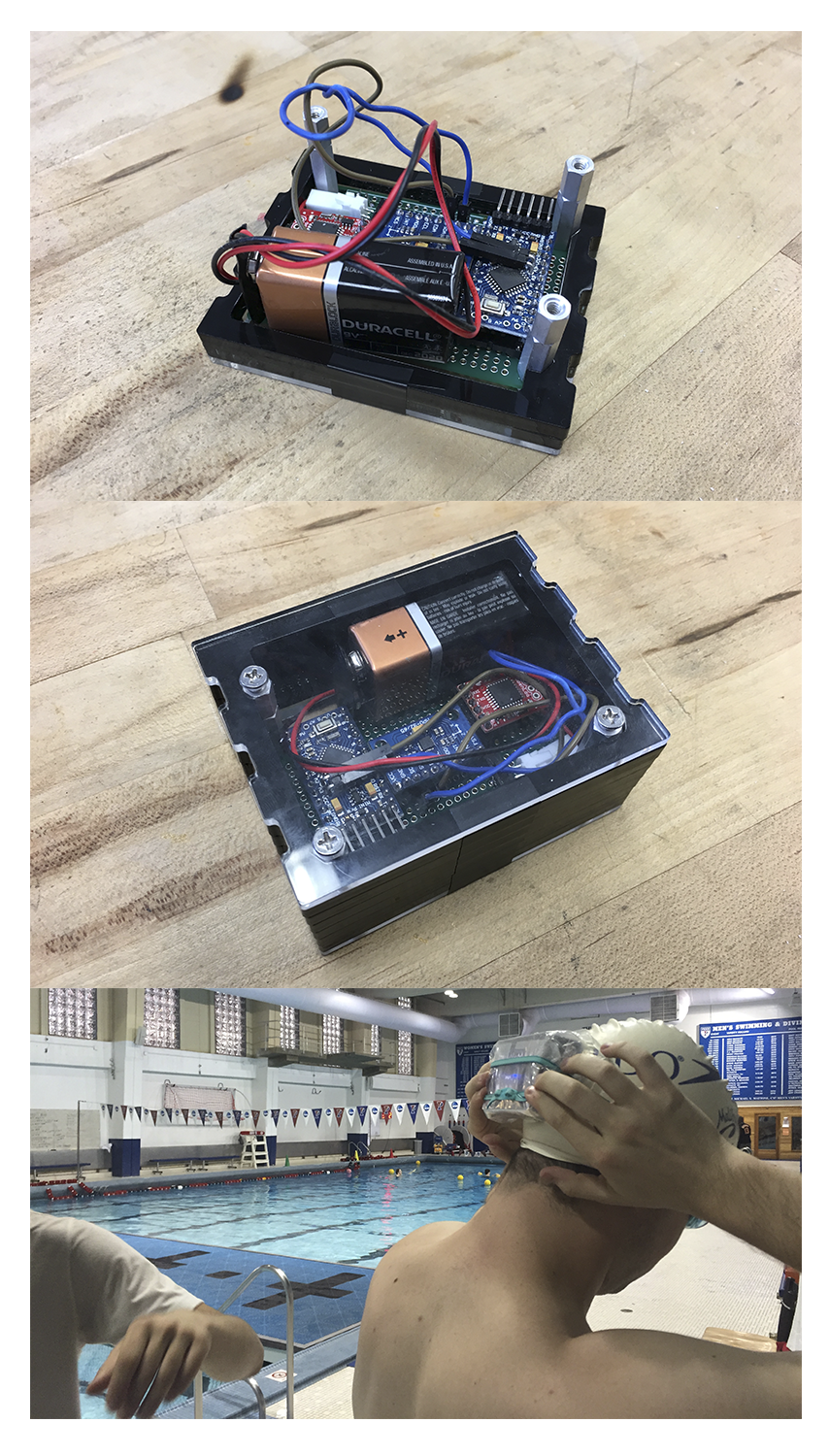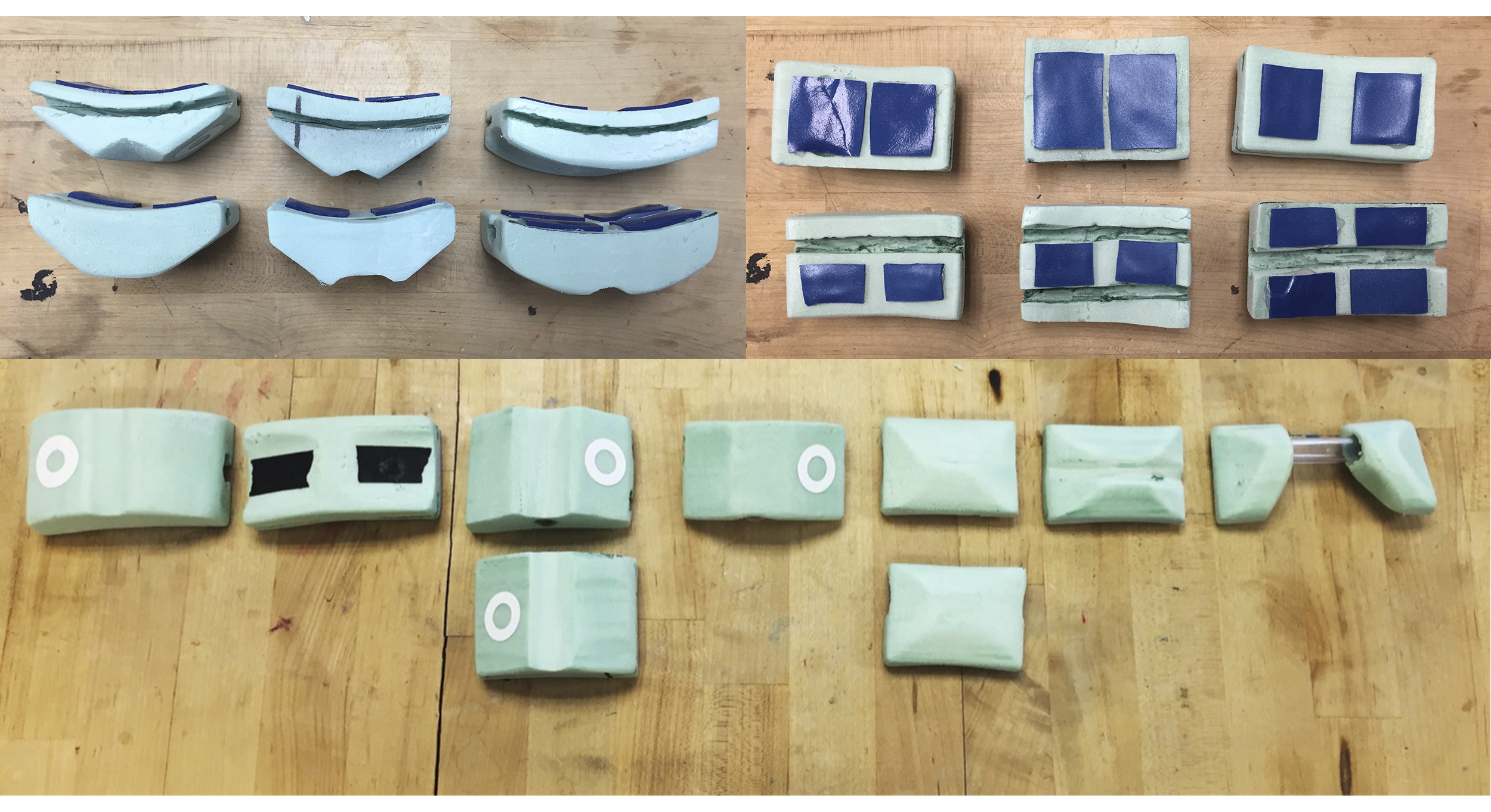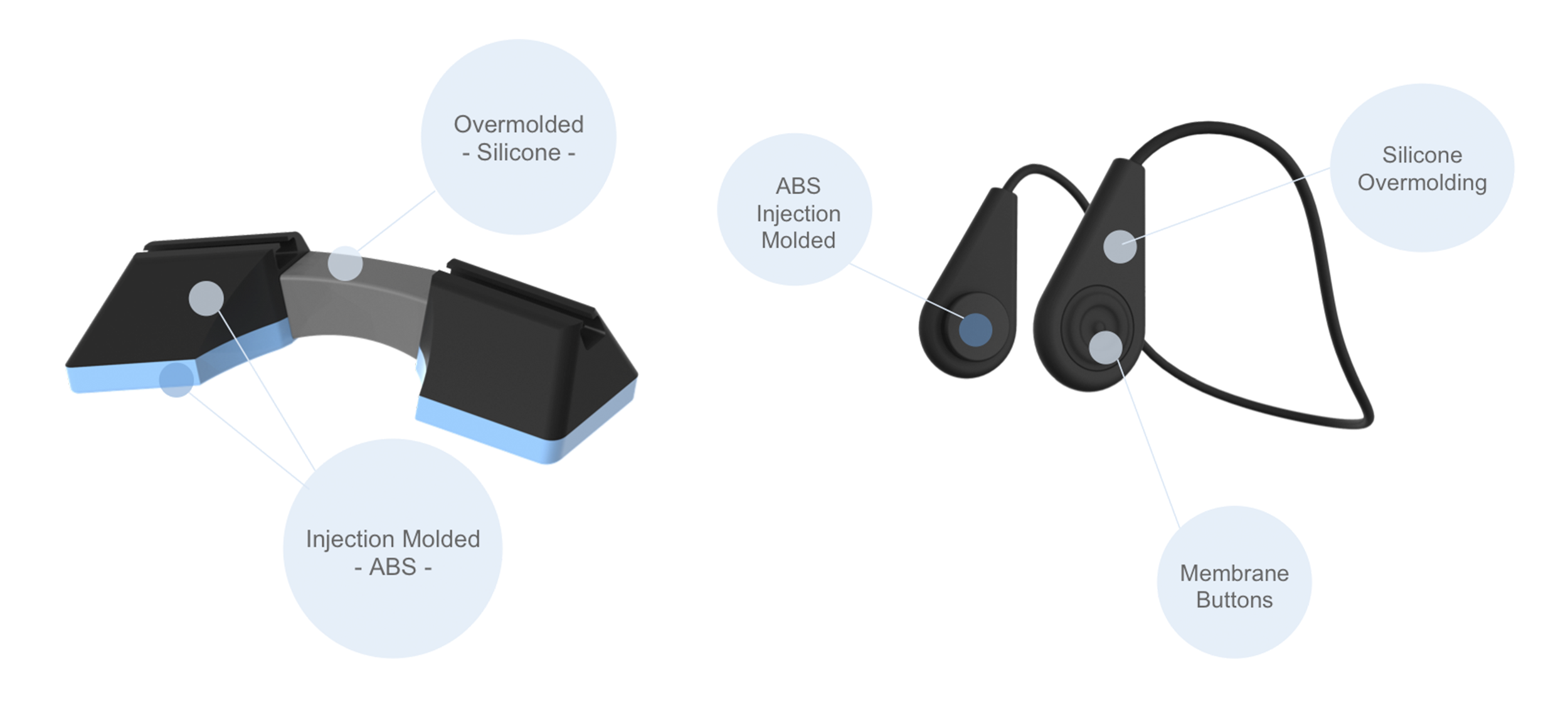
Wavtrac - Product Design

Wavtrac is a swimming wearable that provides real-time audio feedback with seamless audio entertainment integration to better inform the lap swimming experience. I completed Wavtrac as the final thesis project for the Integrated Product Design program at Penn on a team of four.
This is the page for the physical product design and development. You can find the UX Design here.
Purpose | Academic: IPD 799 - Integrated Product Design Thesis
Tools | Soldering station, lasercutter, 3D printer, foam cutter, Arduino, Adobe Illustrator, Adobe Photoshop, SolidWorks

Background
Swimming is one of the best forms of high intensity aerobic exercise you can get. It is hard to find a a better full body workout with the same benefits of low to minimal impact on the joints. Despite the health benefits and general interest in swimming for exercise, many people find it hard to dip their feet in the pool let alone maintain regular swimming regimen. As a team of integrated product designers, we looked to understand why people are not taking full advantage of the benefits of swimming and design a product to break down some of these barriers and improve the lap swimming experience.

Market Research
We conducted secondary research to size the swimming market in the US. As of 2014, 24 million people swim each year; however, this number is growing each year and sees a significant spike each year of the Olympics. The potential for growth is significant as swimming is the most or second most desirable form of exercise that non-participants want to try.

User Research
We conducted ethnographic interviews to better understand why people swim, why they do not, what their swimming process looks like from packing up at home to leaving the locker room after the workout, and everything in between. From these interviews we found some pain points and focused our project moving forward on lap swimmers. These users were looking for better swim set planning with in-pool guidance, progress tracking, and a way to make the swimming experience more fun and engaging.

Ideation
After better understanding some of the problems that exist for lap swimmers, we ideated around these pain points and came up with a variety of solutions that help inform the lap swimming process and make it less daunting and more fun. The ideas ranged from locker storage solutions to lane mounted swim trackers. We ultimately decided to create a head mounted swim tracking wearable with real-time audio feedback and entertainment. Using audio feedback allows our device to give the swimmer updates on there progress without interrupting the flow of their workout by making them stop to check a screen or other device. Additionally, we can seamlessly integrate this audio feedback with audio entertainment, so lap swimmers can listen to their favorite playlist while getting in some great aerobic exercise. We chose to use bone conduction speakers as our means of creating the audio experience as swimmers we interviewed had hygiene and comfort concerns with in-ear headphones.

Functional Prototyping
I made a functional prototype to determine how accurately we could track laps at the pool reading translational and rotational acceleration values using an Arduino Pro Mini connected to an IMU and SD Card module to write the data. After prototyping on a small solderless breadboard, I created the more robust device using a perfboard housed in lasercut acrylic so that we would get reliable data readings as the user swims through the water. We strapped this device under our team members' goggles and swim cap.

Lap Tracking Validation
From the testing, we verified that we could get reliably accurate lap counts using filtered data from the gyroscope reading. Series 2 of the above plot is rotational acceleration about the transverse axis displayed in the diagram above and to the left. From this data, we can pick out the 5 flip turns performed during the test amounting to a total count of 6 laps. Additionally, the data from the accelerometer explained why typical wearable fitness trackers with only an accelerometer cannot accurately count laps especially if the wearable is on the wrist.

Product Architecture
After determining our swim tracking method would work, in order to move forward with the industrial design of the Wavtrac swimming wearable we created a rough product architecture with all of the anticipated componentry: a PCB with 8 GB of flash memory, microprocessor, IMU IC, audio amplification IC, Bluetooth IC, a 500 mAh LiPo battery, and two bone conduction speakers. This rough volume estimation gave us confidence that we would be able to create a product with a slim profile which is both important for the users' perception of the device as well as in minimizing drag through the water.

Sketch Models
The four person team split into two teams to pursue two different Wavtrac wearable concepts: a side mounted, headphone style concept and a back of the head, goggle mounted module. I was part of the team that worked on developing the back of the head models. We created mock-ups of the back of the head device in order to better understand the user experience of mounting the device to their goggles, understand the button layouts to navigate workouts and music, and ergonomics of a device mounted on the back of the users' head while swimming. We constructed these models primarily of foam in order to rapidly create different design iterations.

Concepts
Each team further refined their concepts. With the back of the head concept, we arrived at a design that interfaces with a variety of goggle straps (single band, thick band, clasped) and has a flexible center portion in order to better conform to the head and accommodate ponytails under the swim cap as the bone conduction speakers must have good contact with the users' head with minimal material in between.

Final Concept
The team rejoined forces to pursue a single concept with side of the head bone conduction and a focus on simplifying the process of goggle integration. We finalized the industrial design of the concept and created a semi-functional looks-like prototype. The prototype was semi-functional because it only provided the bone conduction audio experience without waterproofing or the fitness tracking functionality. The tracking functionality was proven feasible earlier with the Arduino Pro Mini prototype. The final concept attachs to the goggle strap and each bone-conduction speaker sits in front of the ears on the sides of the user's head. This is the area where we found the bone conduction technology most effective. The left side of the device allows the user to navigate their workout and the right side allows them to navigate their music.

